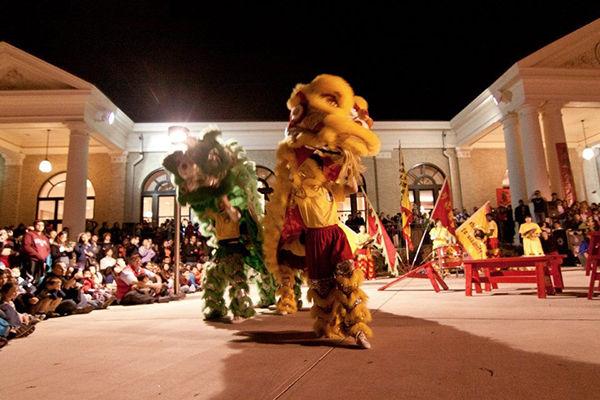Since its inception in 2008, Texas A&M’s Confucius Institute has seen strong growth and its Lunar New Year event is no different.
For the first time, the event will be held off-campus in downtown Bryan. While it had previously been hosted by Sbisa Dining Hall, the event has outgrown its former home and is now poised to take over 26th Street.
Amanda Johnson, an administrative assistant and event planner for the institute, said the focus this year is on community involvement.
“For the past few years, members of several businesses downtown had casually mentioned moving the event there, but the conversation was typically held too late to plan for the upcoming event,” Johnson said. “Immediately following the 2014 celebration, we met with Bryan representatives to begin planning the 2015 event.”
Johnson also anticipates the event will spark a greater interest in the Bryan area for any Aggies who have yet to embrace it.
“Our hope is that the people who live in and around College Station, but who have never visited Downtown Bryan, can experience the great atmosphere it provides and become regular guests,” Johnson said
But the move has caused a few problems for its volunteers.
“Many of our past volunteers were international students who didn’t have vehicles.” Johnson said. “Since the event was on campus, it was very easy for them to travel. It just takes a little more planning and carpooling, but we feel very fortunate that so many students and community members have offered their time to ensure a successful event.”
Gowa Borzigin, a prominent figure in the Chinese community and former emcee for the Chinese New Year event hosted in San Antonio, explained the significance of the Year of the Goat.
“The Year of the Goat is believed to bring peace, harmony, love and resolutions,” Borzigin said. “It also symbolizes wealth and prosperity. In ancient China, only the rich could domesticate goats and sheep so they could enjoy bountiful meat dishes, use sheep skins and fur clothing.”
Borzigin said the celebration is association with a mythical being called Nian.
“Nian is a monster who eats children and livestock if not fed,” Borzigin said. “People found out that Nian was afraid of sticky rice, the color red and firecrackers. So the superstitious people began to prepare lots of food, wear red, decorate their doorways with red banners and light firecrackers to scare away the evil spirit while also bringing good luck to the new year.”
But Borzigin said the ancient traditions have become more modern over time.
“The celebration is becoming more and more commercialized and modernized these days,” Borzigin said. “In fact, the biggest Chinese New Year’s celebration outside of China takes place in the United States. Many people, businesses and families take advantage of the event to celebrate and renew business networks, friendships and families. It is a tradition that keeps on giving and adding new meanings every year.”
Trung Nguyen, a lion dancer for Lee’s Golden Dragon performing Saturday, said lion dancing has also modernized since its ancient beginnings.
“Traditionally, there were more powerful movements from the lion to scare away evil spirits. They would do very forceful movements” Nguyen said. “I would say now, the lion is more cute and playful and fun, interacting with the crowd, so it has changed in that aspect.”
The high-octane dance isn’t without its consequence, however.
“This past week we suffered an injury,” Nguyen said. “We’ve never had anything real serious, no broken bones or anything, but we have fallen and been strained here and there.”
The lion dances will take place at 2 and 3 p.m., with an encore performance at 4:30 p.m.
For a more comprehensive list of events and times, check out the Confucius Institute website.
Lunar New Year shifts venues
February 27, 2015

Provided
Lion dancers perform at a past Lunar New Year Celebration.
Donate to The Battalion
Your donation will support the student journalists of Texas A&M University - College Station. Your contribution will allow us to purchase equipment and cover our annual website hosting costs.




















